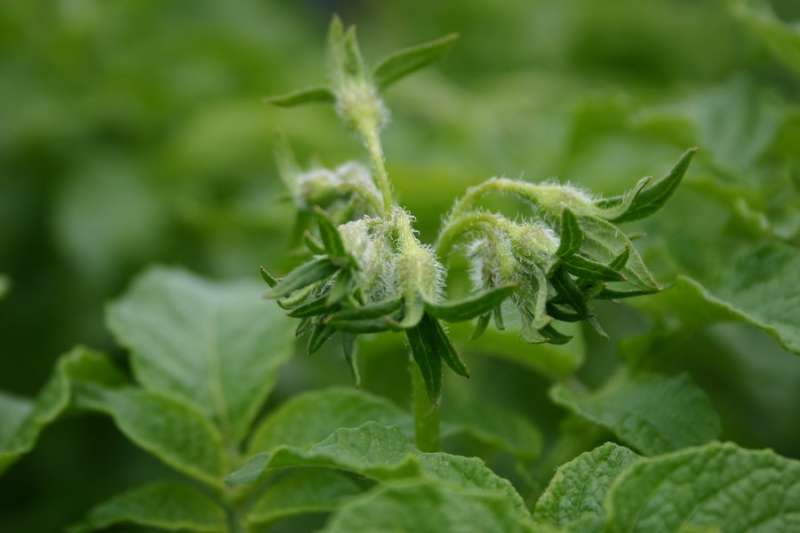Hitting the bull's eye on crop nutrient requirements

Researchers from Aarhus University have developed a method to match crop nitrogen requirements more precisely than ever before. The method can reduce agricultural nitrogen emissions and simultaneously optimise yield.
Neither too much nor too little is often the best way to go. This is also the case with regard to nitrogen fertilisation of crops - but how can you know exactly how much nitrogen a crop needs at a given growth stage in order to maximise yield? Researchers from Aarhus University have found a method that can answer this question. The method can determine crop nitrogen requirements with a precision of 10-20 kg N/ha.
The method works by preparing a reference curve to determine when a crop is deficient in nitrogen. The reference curve is based on comparisons of data on leaf area with data on leaf reflectance at different light wavelengths.
Potatoes used as a model
To develop the method, the researchers used potatoes as guinea pigs. Applying the full dose of nitrogen all at one time, when the potatoes are planted, is the easiest but not necessarily best procedure.
- It is simple to give the potatoes their total amount of nitrogen when you plant them. There are, however, several disadvantages to this method, explains Professor Mathias Neumann Andersen from the Department of Agroecology.
The most notable disadvantage is that the nitrogen can leach to the aquatic environment. This can happen if it rains a lot before the potato plants manage to absorb the nitrogen. This can result in nitrogen deficiency in the potatoes with resulting poorer growth and yield, and an aquatic environment that suffers from nutrient excess.
On the other hand, potato plants can also be given too much nitrogen because you do not know and cannot measure how much is mineralized in the spring and early summer. If this happens, you run the risk that the plant concentrates too much on growing leaves and not enough on growing tubers.
Nitrogen application spread over several dosages
It can be difficult to find the right balance between too much and too little. A solution to the problem could be to spread the application of nitrogen so the crop is given a little snack in the beginning of the season and the rest of its ration in the course of the growing season. The challenge lies in determining the amount and timing of the supplemental nitrogen doses - and this is where the new method is helpful.
By combining measurements of leaf area and reflectance it has been possible to come much closer to determining when the plants have a need for more nitrogen with a precision level of 10-20 kg N/ha.
- Our results indicate that the level of precision is probably closer to 10 than 20 kg N/ha if you take frequent measurements, says Mathias Neumann Andersen.
The crop compensates
Sporadic nitrogen deficiency in potato plants does not seem to be a problem.
- Even though the plants experienced stress due to nitrogen deficiency from time to time, they recovered quickly once nitrogen was applied. Our findings indicate that weekly measurements and applications of any lacking nitrogen is sufficient for the plants to compensate fully for sporadic nitrogen deficiency, says Mathias Neumann Andersen.
A great advantage of the new method is that it appears to be independent of year and potato variety.
The next step will be to make the nitrogen application dosages more precise. The researchers from Aarhus University are also working on this. They have just received funding for a follow-up project where they will use the new method for precision fertilisation in various areas of the field using novel drone, satellite and sensor technologies.
The results described in this article are based on studies carried out in the recently completed EU project FIGARO.
More information: Zhenjiang Zhou et al, A RVI/LAI-reference curve to detect N stress and guide N fertigation using combined information from spectral reflectance and leaf area measurements in potato, European Journal of Agronomy (2017). DOI: 10.1016/j.eja.2017.04.002
Provided by Aarhus University


















